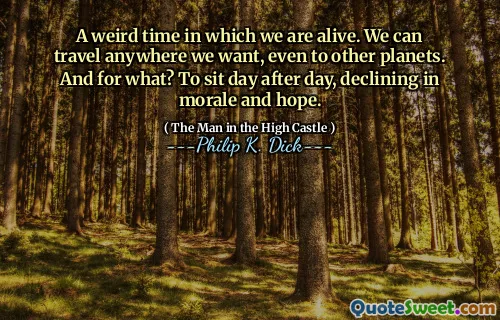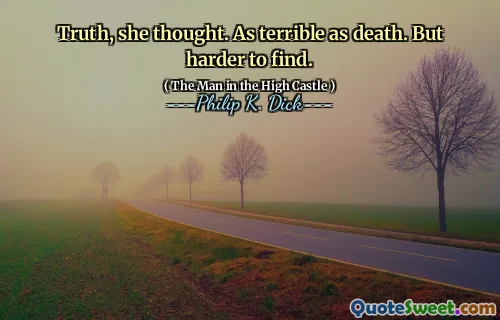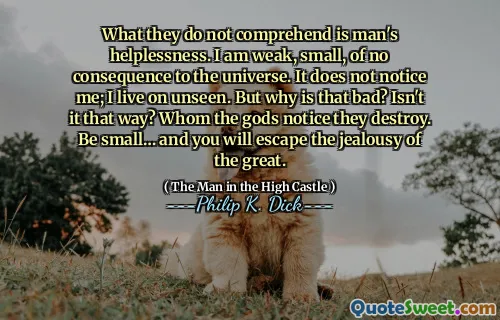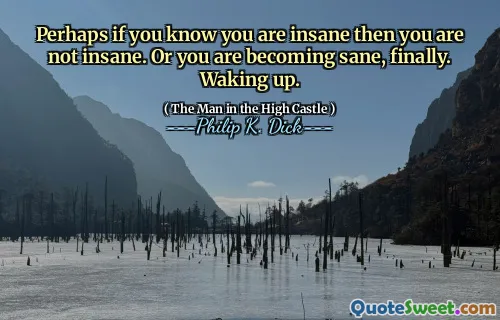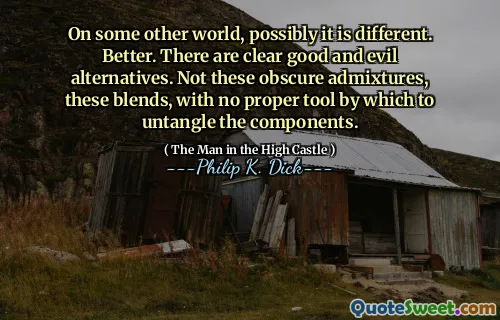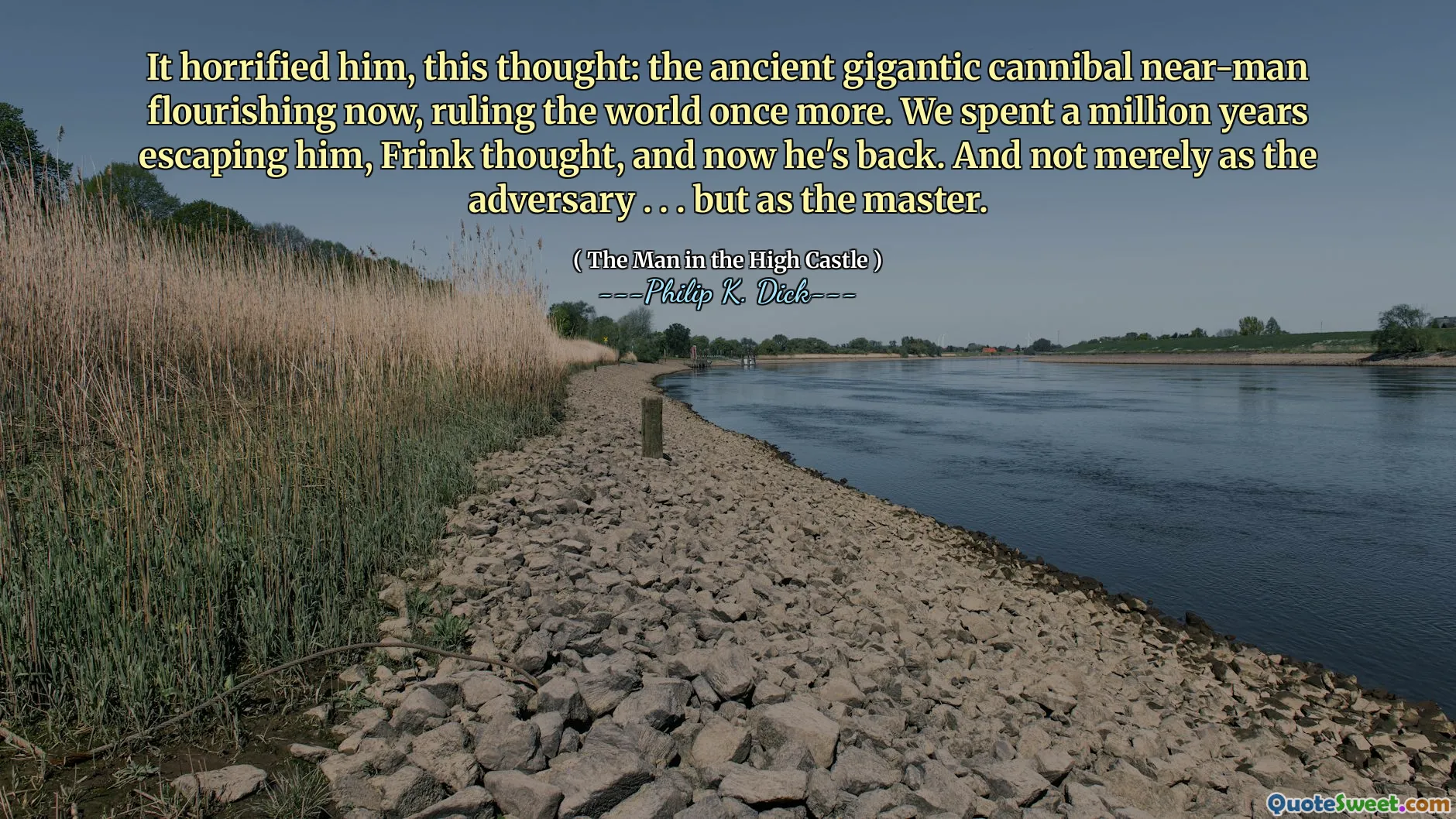
It horrified him, this thought: the ancient gigantic cannibal near-man flourishing now, ruling the world once more. We spent a million years escaping him, Frink thought, and now he's back. And not merely as the adversary . . . but as the master.
In "The Man in the High Castle" by Philip K. Dick, the character is deeply troubled by the notion of a monstrous, primal force re-emerging in the world. This entity, representing a form of humanity’s dark history, has seemingly regained power and influence, casting a shadow over civilization. Frink’s reflection highlights the long struggle humanity endured to overcome such threats, only to face the terrifying reality of their return.
The concept serves as a chilling reminder of how easily society can revert to its baser instincts. Instead of being mere adversaries, these ancient horrors have now taken the role of rulers, suggesting that despite progress, humanity remains vulnerable to its past failings. Frink’s horror encapsulates the fear of regression into a world ruled by these archaic forces, prompting readers to reflect on the cyclical nature of history and the fragility of civilization.
